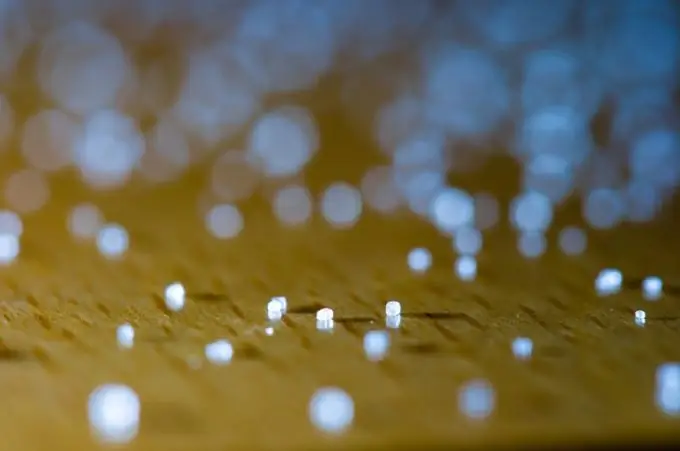Bokeh - this word came to us from the Japanese language, it translates as "blur, fuzziness". In photography, bokeh means that the background is blurred as much as possible, emphasizing the main subject of the photo. Bokeh is especially common in portraits because the shallowest depth of field is used.

It is necessary
- - fast lens with a wide aperture;
- - a sheet of black thick cardboard.
Instructions
Step 1
To get bokeh in the picture, it is advisable to use a lens with a large aperture. Fully open diaphragm should have a value of no more than 2, and preferably even less. Focus and take a shot with a shallow depth of field, that is, at a fully open aperture. You will notice how blurry the background is. Light spots have a special shape, it is different for each lens, this is called a bokeh pattern. If it turns out beautiful, then they say that it is a beautiful bokeh.
Step 2
Bokeh depends on how the aperture closes the aperture in the lens, in which geometric shape the aperture is converted. Using this information, you can create the bokeh yourself. Think of what form you would like to receive it.
Step 3
Take a sheet of thick black cardboard. Cut off its edges and bend it so that you get the lens attachment, like a hood, only with the edges it should be put on the lens and not protrude outward. That is, it is just a lens attachment that completely covers it, like a cap.
Step 4
Now cut a hole in the center of the nozzle, give it the shape you would like to see on your bokeh. You can not restrain your imagination, but cut out anything, for example, an asterisk, a heart, a flower and other shapes. The main thing is that the size of the hole should not be too large.
Step 5
Open the aperture on the lens and put on the resulting lens attachment. Take a few shots to appreciate the resulting bokeh. This effect is very noticeable if light comes into the frame from sources that did not fall into the field of focus, for example, flashlights.






